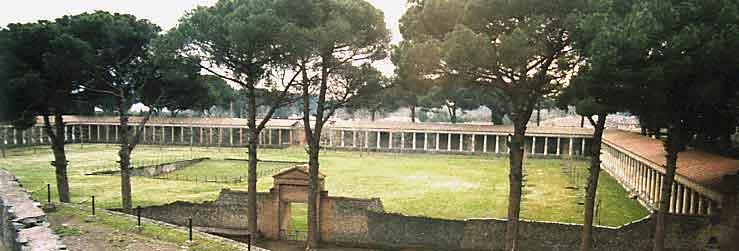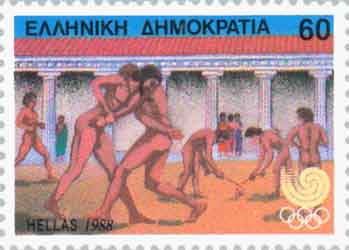|
|
Pompeii palaestra seen from the top of the stadium wall. The depression center left was filled with water and used for swimming practice and mock naval battles. To the right (partially obscured by a tree trunk) is a line of carbonized tree stumps, the remains of the trees (each one hundreds of years old) of the palaestra burned in the volcanic eruption of 79. Between them and the colonnade, a line of saplings recently planted as replacement. The palaestra was the ancient Greek wrestling school. The events that did not require a lot of space, such as boxing and wrestling, were practiced there. The palaestra functioned both independently and as a part of public gymnasia. A palaestra could exist without a gymnasium, but no gymnasium can exist without a palaestra. The Palaestra as an Athletic, Cultural and Social Center The palaestra was a prominent feature in Greek society, the significance of athletic competition - and by extension, physical beauty - translating into the importance of the building itself. The status of the specific event, wrestling, sponsored by the palaestra added to the importance of the building. Wrestling was one of the oldest and most widely distributed sports in the Greek world. Over time, the palaestra's role as an educational and social space also increased. Although the palaestra continued to function as the wrestling school, lectures and intellectual conversation were hosted there as well, and this educational role gradually took over the function of the building. The grounds and buildings of the palaestra were decorated with statues of famous athletes and gods and heroes such as
i Retrieved from "http://en.wikipedia.org"
 |
|
|||||||||||||||||

